Content:
- Planting squash
- Growing squash.
- Caring for squash.
- Little tricks for growing squash.
Squash is a bushy herbaceous plant of the pumpkin family. It is better to eat young fruits, which resemble zucchini in taste. There are not so many varieties of squash and they differ more in the color of the fruit and the timing of ripening, rather than in taste.
They are grown both in open ground and in greenhouses, under temporary film covers, and in greenhouses.
Planting squash
For planting, you can use both seedling and non-seedling methods.
The seedling method is recommended for obtaining an earlier harvest, as well as for growing in northern regions. In areas with warm climates, it is best and easiest to sow seeds directly into the ground.
Where is the best place to grow? To obtain a good harvest, it is recommended to grow this crop in well-lit areas, since even with slight shading, the seedlings stretch out and fruiting slows down.
These plants are heat-loving, so try to plant them in places protected from cold winds. To get a good harvest, grow in areas with loose, fertile soil with a neutral reaction.
Preparing seeds for sowing. To ensure uniform seedlings, treat the seeds before sowing: dip them in an aqueous solution of a growth stimulator for a day, then rinse with clean water, wrap in a damp cloth and leave for 1-2 days at a temperature of 20-25 C.
Good results are obtained by preheating the seeds for 4-6 hours at a temperature of 50-60 °C - this procedure reduces the risk of plants being damaged by viral infections.
Some gardeners advise hardening off squash seeds before planting. To do this, you need to moisten them, put them in fabric bags and hold them first for 6 hours at a temperature of 18-20 ° C, then for 18-24 hours at a temperature of 0-1 ° C. Immediately before sowing, the seeds can be disinfected in a 1% solution of potassium permanganate, then washed and dried.
When to start planting. Sow seeds in open ground at the end of May (in the southern regions - 7-10 days earlier); the soil temperature should not be lower than 10-12 °C. The recommended planting depth is 5-7 cm on light soils and 3-5 cm on heavy soils.
Growing seedlings. If you want to grow squash using the seedling method, sow the seeds in the second or third decade of April, plant the seedlings in the beds at the age of 20-25 days, when it becomes warm.
To grow seedlings, use pots with a diameter of 8-10 cm or cassettes filled with a soil mixture consisting of equal parts of forest soil and humus. Plant 2 seeds in each pot to a depth of 3-5 cm.
Squash germinate best at 28-32°C, but after germination it is better to keep the plants at a temperature of 20-22°C during the day and 16-20°C at night, so that the seedlings grow strong and do not stretch out. After 3-5 days the temperature can be increased. When real leaves appear, leave a stronger seedling in each pot, and pinch the second one above the soil surface (it is not recommended to weed it out so as not to damage the roots of the remaining plant).
Planting squash. It is most convenient to plant in holes located at a distance of 70-90 cm from each other. You can put 2-3 seeds in each hole, and then weed out unnecessary seedlings or transplant them to another place.
Seedlings should also be planted in holes, and it is best to do this in cloudy weather or in the late afternoon. After planting, cover the holes with film until seedlings emerge, and if you are planting seedlings, mulch the soil with organic materials after watering.
Growing squash, caring for squash
Caring for squash is not complicated and boils down to regular watering, loosening the soil and fertilizing.
Temperature
Seed germination begins at a temperature of 15-17 C, so plant them in open ground after warm weather sets in. To protect against night cold snaps and possible return frosts, cover the crops with film (in addition, the film will help maintain high humidity, which is necessary for the normal cultivation of squash).
Squash grows best and bears fruit at a temperature not lower than +20 “C; with a sharp cold snap, root rot may develop (roots and stems are damaged, leaves become covered with yellow spots and then wither, which often leads not only to a reduction in the number of ovaries, but also to death of the entire bush).
How to water
This vegetable crop is a moisture-loving plant, so to get a good harvest, do not forget about regular watering throughout the season. As with cucumbers, use warm water and keep the leaves and flowers of the plants away from moisture.
It is not recommended to loosen the soil in the beds too often, therefore, to prevent it from drying out, after watering, mulch with peat, humus, and fertile soil in a layer of 3-5 cm. The row spacing can be covered with mowed grass from the lawn (make sure that no weed seeds get in with it) .
Feeding squash
A good harvest cannot be obtained without applying fertilizers. If the soil is acidic, in the fall, when preparing the beds, it is recommended to add lime (100-600 g per 1 m2); if the soil is slightly acidic, you can add ash immediately before planting (30-40 g per hole). And when growing squash on clay or peaty sandy soil, pre-sowing application of mineral fertilizers and organic matter is recommended.
The first time after planting, be sure to feed the plants before flowering with complex mineral fertilizers dissolved in water (30 g per 1 bucket of water) at the rate of 5 liters. solution per 1 square meter.
During the cultivation of squash, alternate, regular fertilizing with either organic or mineral fertilizers is recommended. You can use an aqueous solution of mullein (1:10) or chicken droppings (1:20) for this purpose.
Little tricks for growing squash
Squash bear fruit continuously, so harvest every four to six days without letting the fruit grow too large. Otherwise, there will be a delay in flowering and the formation of new fruits, and the ovaries may crumble.
Due to excess nitrogen in the soil, vegetative mass can develop to the detriment of the crop. In this case, carefully tear off or cut off the bottom 2-3 leaves from each bush with pruning shears, and repeat the operation a few days later.
To prevent the fruits from rotting and being eaten by slugs, place sheets of plywood under the lower ovaries or mulch the soil with dry grass.
Now watch a video about one interesting and cunning method of growing this vegetable:
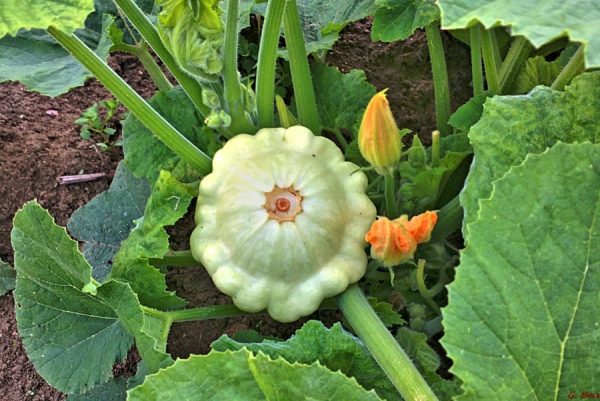
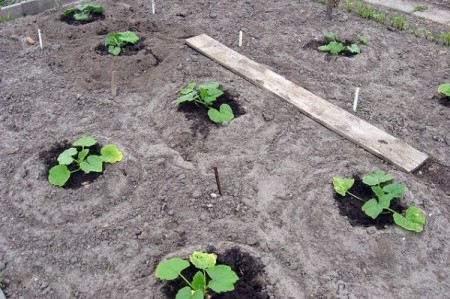

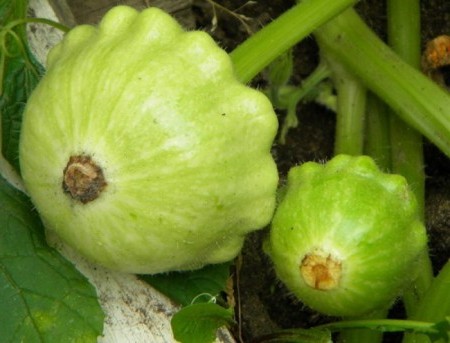
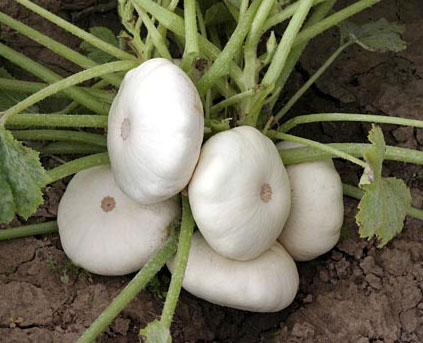
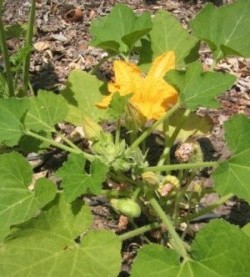

 (6 ratings, average: 4,00 out of 5)
(6 ratings, average: 4,00 out of 5) CUCUMBERS NEVER GET SICK, I'VE BEEN USING ONLY THIS FOR 40 YEARS! I SHARE A SECRET WITH YOU, CUCUMBERS ARE LIKE THE PICTURE!
CUCUMBERS NEVER GET SICK, I'VE BEEN USING ONLY THIS FOR 40 YEARS! I SHARE A SECRET WITH YOU, CUCUMBERS ARE LIKE THE PICTURE! You can dig a bucket of potatoes from each bush. Do you think these are fairy tales? Watch the video
You can dig a bucket of potatoes from each bush. Do you think these are fairy tales? Watch the video
 How our fellow gardeners work in Korea. There is a lot to learn and just fun to watch.
How our fellow gardeners work in Korea. There is a lot to learn and just fun to watch. Eye trainer. The author claims that with daily viewing, vision is restored. They don't charge money for views.
Eye trainer. The author claims that with daily viewing, vision is restored. They don't charge money for views. A 3-ingredient cake recipe in 30 minutes is better than Napoleon. Simple and very tasty.
A 3-ingredient cake recipe in 30 minutes is better than Napoleon. Simple and very tasty. Therapeutic exercises for cervical osteochondrosis. A complete set of exercises.
Therapeutic exercises for cervical osteochondrosis. A complete set of exercises. Which indoor plants match your zodiac sign?
Which indoor plants match your zodiac sign? What about them? Excursion to German dachas.
What about them? Excursion to German dachas.
C. Seeds are sown in open ground in late May - early June, when the threat of frost has passed. For a conveyor of fresh squash, sowing can be carried out several times a season with an interval of 5-6 days.
Is it necessary or not to remove the stepsons from the squash lashes?
Tatyana, there is no need to remove the stepsons from the squash.